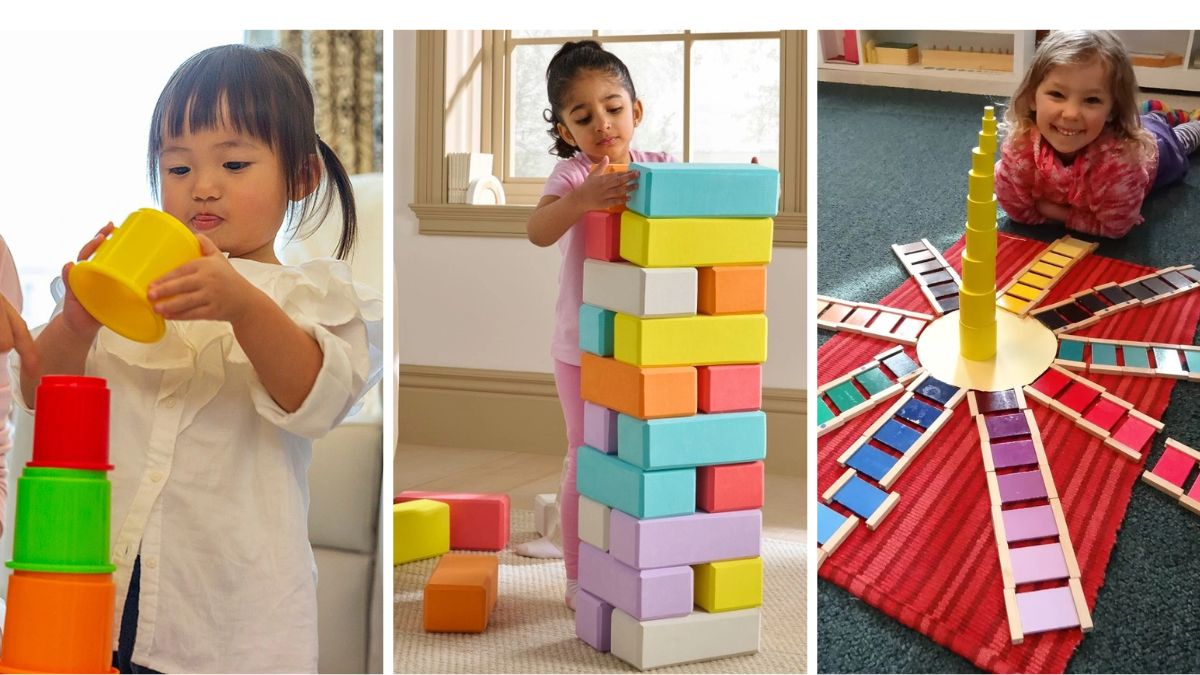Montessori activities at home seem impossible when you lack expensive materials and specialized training. Your child craves hands-on learning, but store-bought educational toys cost hundreds of dollars and often miss the mark. Screen time keeps increasing real development opportunities slip away.
Authentic Montessori Activities You Can Do at Home, learning happens with simple household items you already own. Your kitchen, living room, and backyard into powerful learning environments that nurture independence, concentration, and natural curiosity in your child.
41 Interactive Montessori Activities You Can Do at Home
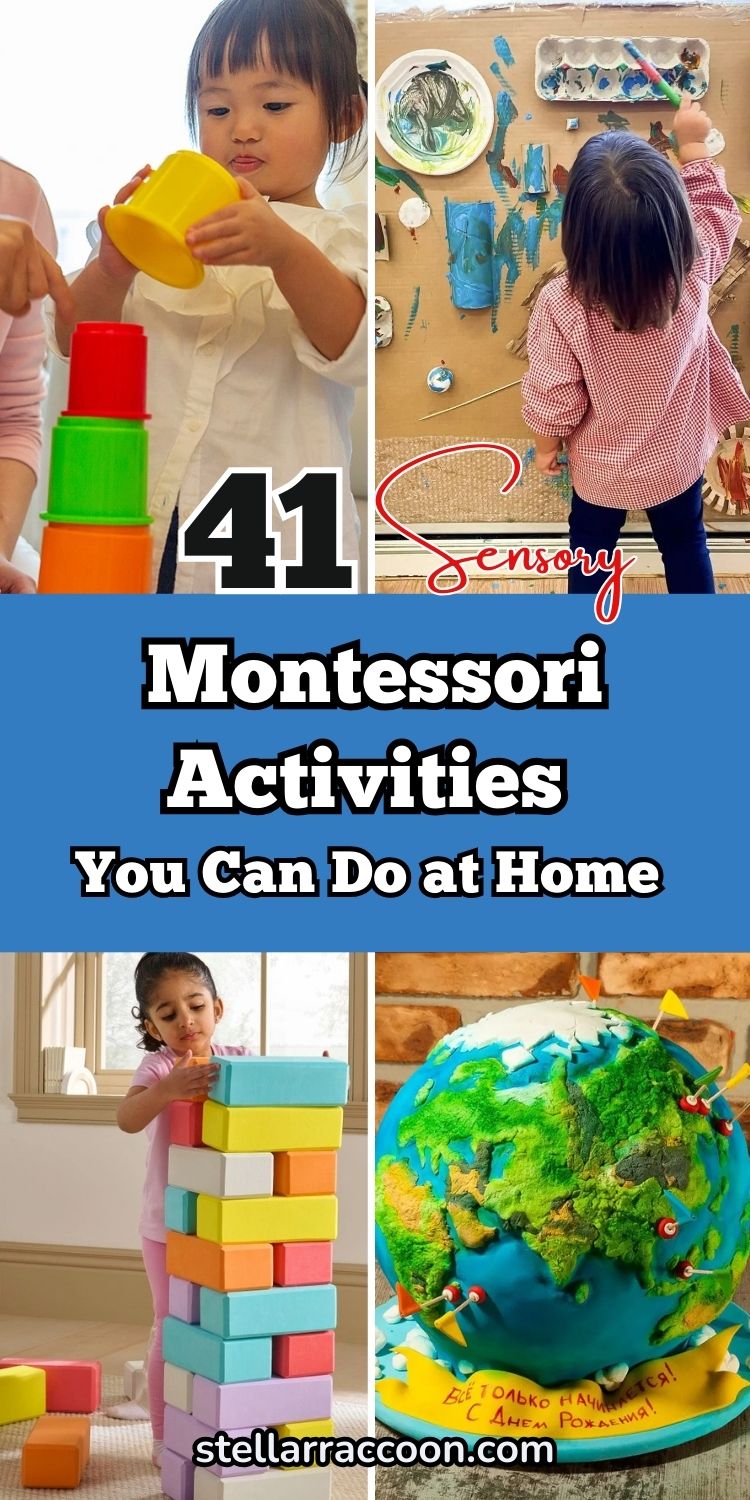
1. Water Play with Pouring Fun

Two young kids are fully engaged in a hands-on pouring activity, an essential part of early childhood development. They’re carefully pouring liquid from one container to another, which helps build hand-eye coordination, concentration, and independence.
You don’t need anything fancy, just a bucket, a few bottles, and water. This kind of play not only teaches practical life skills but also keeps little ones focused and calm.
2. Spoon & Transfer Focus Time
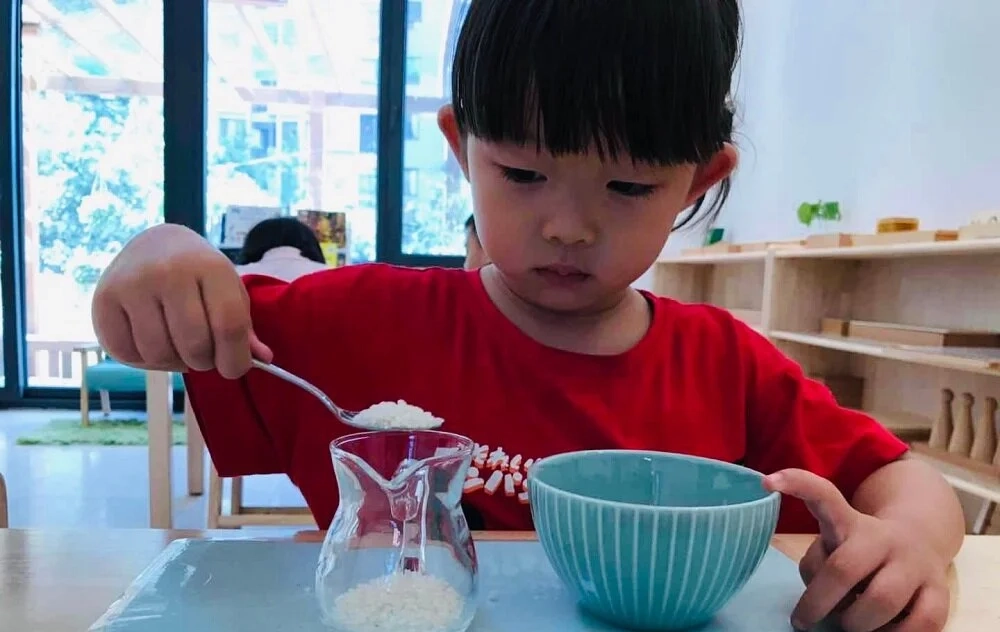
The child is fully absorbed in a simple but powerful Montessori activity, spooning dry rice from one bowl to another. It may look basic, but this task strengthens fine motor skills, patience, and concentration. Easily recreate this at home using uncooked rice, a spoon, and two small bowls or jars.
It’s a calming activity that also helps children learn control and independence. Turn it into a little challenge called Spoon & Fill, where your child tries to fill the jar to the line without spilling.
3. Color Sorting with Matching Cards
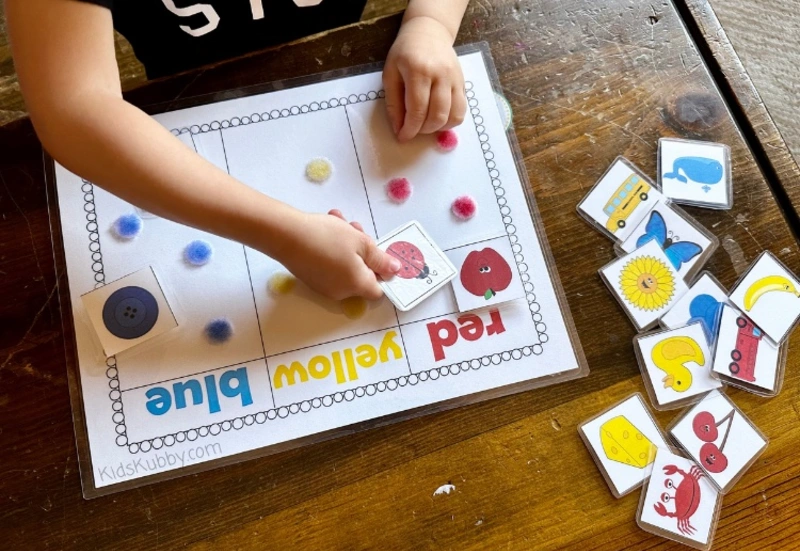
Super fun and hands-on way to teach kids about colors using Montessori principles. A child is sorting picture cards and matching them to their color groups: red, yellow, and blue. It’s simple, mess-free, and can be done with basic printables or homemade cards.
This type of activity supports visual recognition, early categorization skills, and also boosts vocabulary. Call this activity ‘Color Match Sort,’ where kids pick a card and decide where it belongs. It’s learning through play, and they don’t even realize they’re working.
4. Little Shoe Polisher at Work

Focused on polishing a pair of shoes, a classic Montessori task that teaches responsibility, coordination, and patience. This kind of hands-on care routine gives kids a real sense of purpose. You can easily do this up at home using an old pair of shoes, a soft cloth, and a bit of polish.
It’s not just about clean shoes, it’s about confidence and independence. Try calling this activity Shine & Smile, because nothing beats the pride of doing a real job well.
5. Paper Bear Family Craft
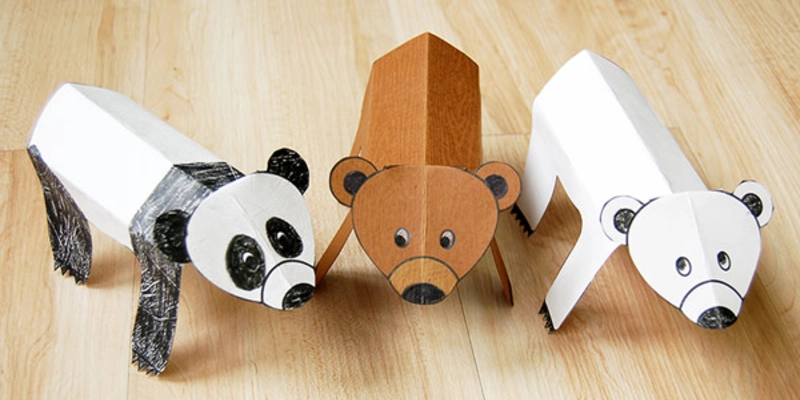
Paper bear trio, panda, brown bear, and polar bear, is a fun, creative way to mix art with Montessori learning. Kids can cut, fold, and color these paper animals, learning about wildlife, habitats, and differences in species.
Excellent hands-on activity that strengthens fine motor skills, encourages concentration, and invites storytelling or pretend play. Some paper, scissors, glue, and markers to set it up at home.
6. Sensory Seed Apples

Colorful apple-themed craft is more than just cute; it’s a Montessori-inspired sensory activity. Each apple is made from a different texture, like rice, lentils, and seeds, giving kids a rich tactile experience they work on creativity and fine motor control.
Home using glue, dry pantry items, and cardboard apple cutouts. It also opens the door to conversations about color, texture, fruits, and even seasons. A fun game to go along with this could be called Texture Match Apples.
7. Montessori Smelling Bottles Activity

The little girl is deeply focused on smelling herbs from a small glass bottle. This is a classic Montessori activity known as smelling bottles, which helps develop a child’s sense of smell, encouraging concentration and sensory development.
At home, you can create your own by filling small jars with herbs, spices, or dried flowers. Your child guesses the scent or simply enjoys the experience.
8. Snack Sorting Tray

Practical Montessori-inspired activity: a snack sorting tray. Using a silicone ice cube tray, different bite-sized foods like fruits, cheese cubes, lunch meat, and dips are placed in each section.
Not only does this make snack time more inviting for little ones, but it also promotes independence, decision-making, and fine motor skills. Kids experience different textures, flavors, and colors all serving themselves.
9. Blindfold Taste Test
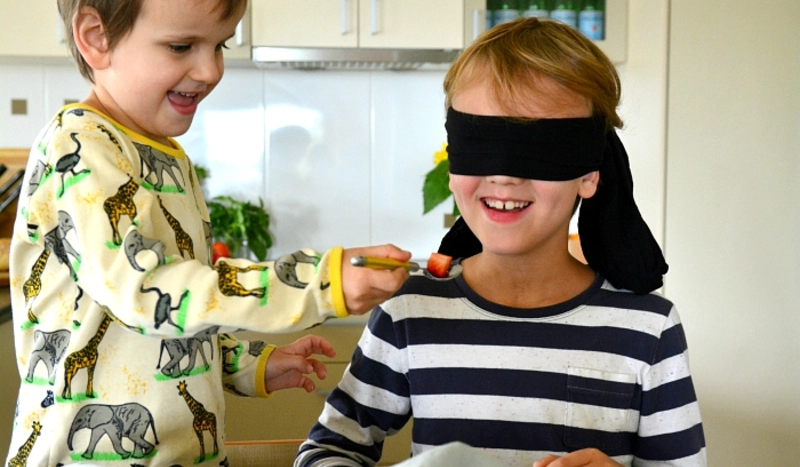
One child is blindfolded, the other gently feeds them a piece of fruit, likely turning snack time into a full sensory experience. Activities like this help children refine their sense of taste and build trust, communication, and social bonds.
It’s also a great way to encourage kids to try new foods without pressure. All you need is some fruit, a blindfold, and a little laughter. Simple, joyful, and educational, this is what Montessori at home is all about.
10. Letter Matching

She’s matching wooden movable alphabet letters to corresponding cards with printed letters. This hands-on task helps children connect the visual symbol of a letter with its physical form, building early reading and writing skills.
You can easily do this at home with printed letter cards and wooden letters. Calm, focused, and gives your child the chance to learn language at their own pace. Activities like this spark curiosity and make learning letters feel like play, not work.
11. Letter Matching and Name Building
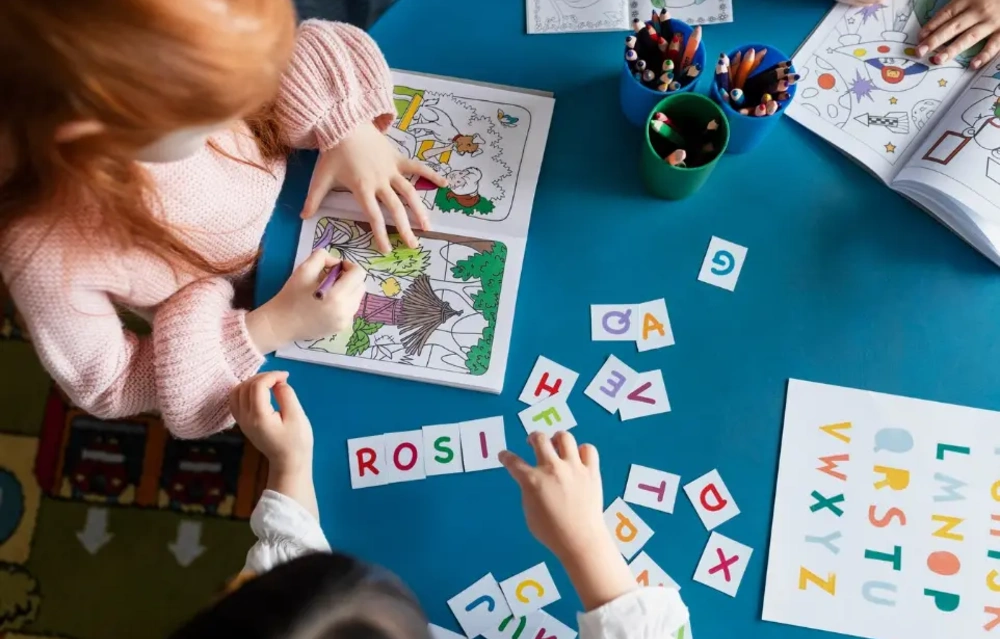
Children are sitting at a colorful table filled with alphabet cards, coloring books, and crayons. One child is building the name ROSIE using cut-out letters, an engaging Montessori-style activity that encourages early literacy.
Letter matching and name building not only teach spelling but also boost fine motor skills, visual recognition, and confidence. It’s simple, creative, and personal, exactly the kind of meaningful learning Montessori encourages in everyday family life.
12. Story Sequencing with Character Cards
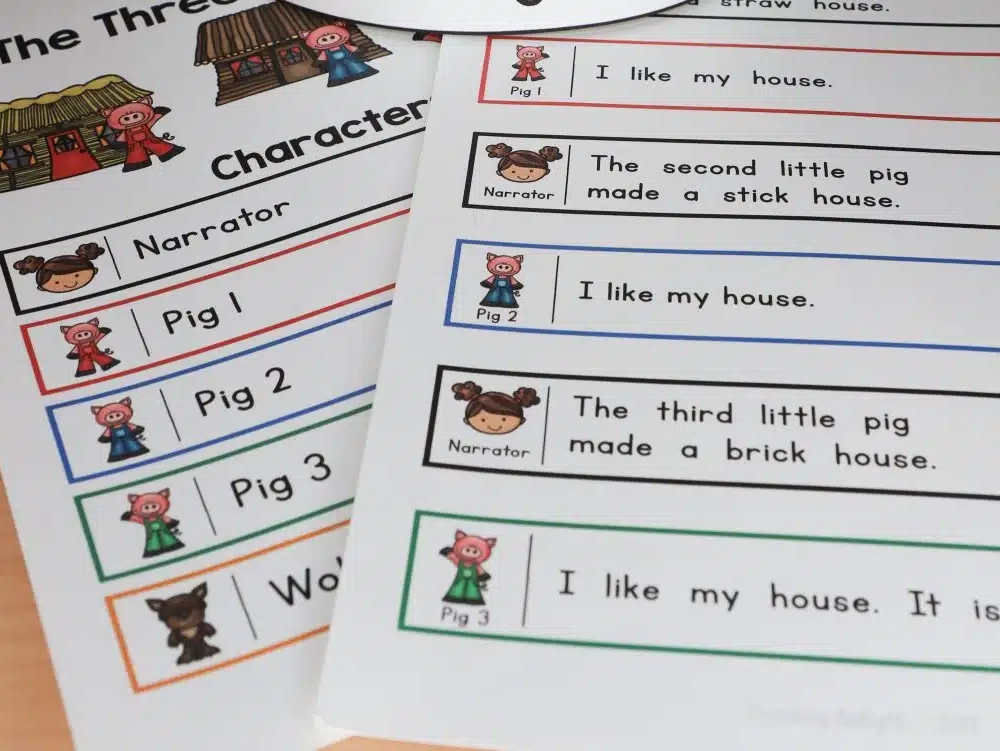
Printable activity based on The Three Little Pigs, where children use character cards and sentence strips to retell the story. This kind of Montessori-friendly activity helps with reading comprehension, sequencing, and character recognition.
Kids can take turns being the narrator or a pig, acting out lines, and matching text to characters. It turns reading into an active, playful experience. You can recreate this at home using any favorite story, just print, cut, and play.
13. Farm Felt Board Activity

Deeply engaged in a hands-on farm felt board activity. Using colorful felt pieces, animals, barns, tractors, and farmers, they’re creating their own little farm world. This type of Montessori-inspired play encourages storytelling, vocabulary development, and creativity.
Kids to practice sorting and categorizing, like grouping animals or matching them to sounds. DIY version at home with felt, glue, and scissors. No batteries, no screens, just learning through play.
14. DIY Animal Puppet Storytelling
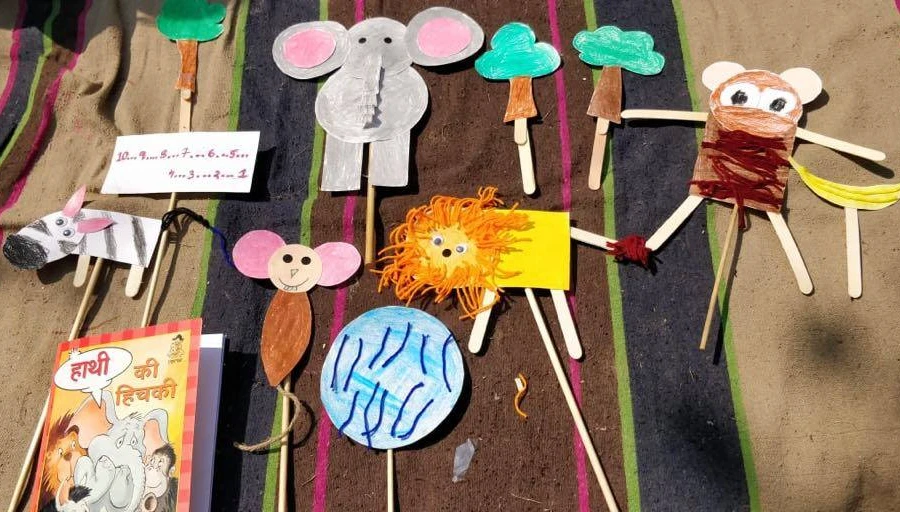
Handmade animal stick puppets, elephant, monkey, lion, zebra, and more, bring a story to life, likely inspired by the Hindi book Haathi Ki Dosti seen in the corner. This Montessori-friendly activity blends creativity, literacy, and fine motor skills.
Children can color, cut, and glue their characters, then use them to act out the story or even make up their own. Hands-on way to build language and confidence, all from a few craft supplies and a love for storytelling.
15. Number Rods Counting
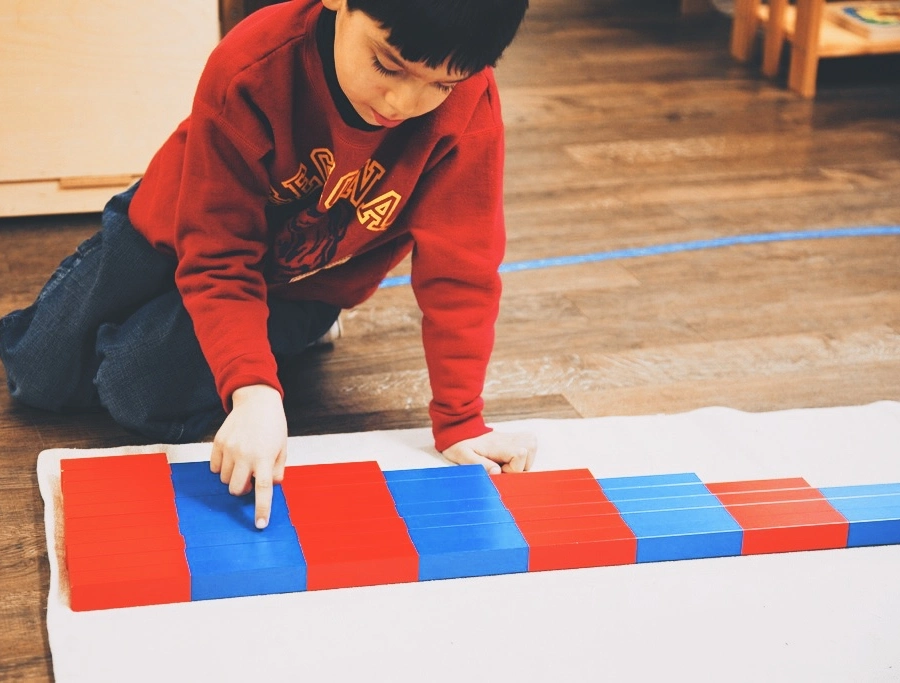
Working with Montessori number rods, red and blue blocks that help kids physically see and feel quantities. Each rod represents a number from 1 to 10, gradually increasing in length. At home, you can create a similar experience using colored paper strips or even LEGOs.
This activity builds number sense, sequencing, and early math confidence. It’s not about memorizing, it’s about understanding.
16. Math Learning at Home

Montessori moment, siblings working together on math. The older child is gently guiding the younger one through a workbook, and colorful manipulatives like an abacus, number cards, and counting sticks are nearby. These tools help turn abstract concepts into something kids can touch and understand.
A table, some patience, and simple materials are all it takes. The Montessori approach values independence, curiosity, and hands-on learning, and this little setup brings all of that into your home calmly and naturally.
17. Pattern Blocks and Geometry Play

Geometry doesn’t need to be boring, especially when you turn it into a hands-on puzzle. The child is fully focused on completing a colorful pattern block design. This Montessori-friendly activity encourages spatial awareness, fine motor skills, and creative thinking all math.
The printed guides help children follow the tactile blocks, give them a chance to experiment. This is an easy at-home grab a jar of blocks and print out some templates. Kids won’t even realize they’re learning because to them, it feels just like play.
18. Giraffe Height Chart Wall Activity

A fun and colorful way to engage your little one in learning is right here, measuring growth with a giraffe height chart. Proudly stands next to a giraffe mural that doubles as a measurement tool. It’s simple, yet packed with Montessori. Children learn about numbers, comparison, and body fun.
Visual and tactile experience inherently supports math and self-discovery. It brings smiles. It’s proof that even a wall can become a joyful learning space at home.
19. Eggshell Gardening for Kids
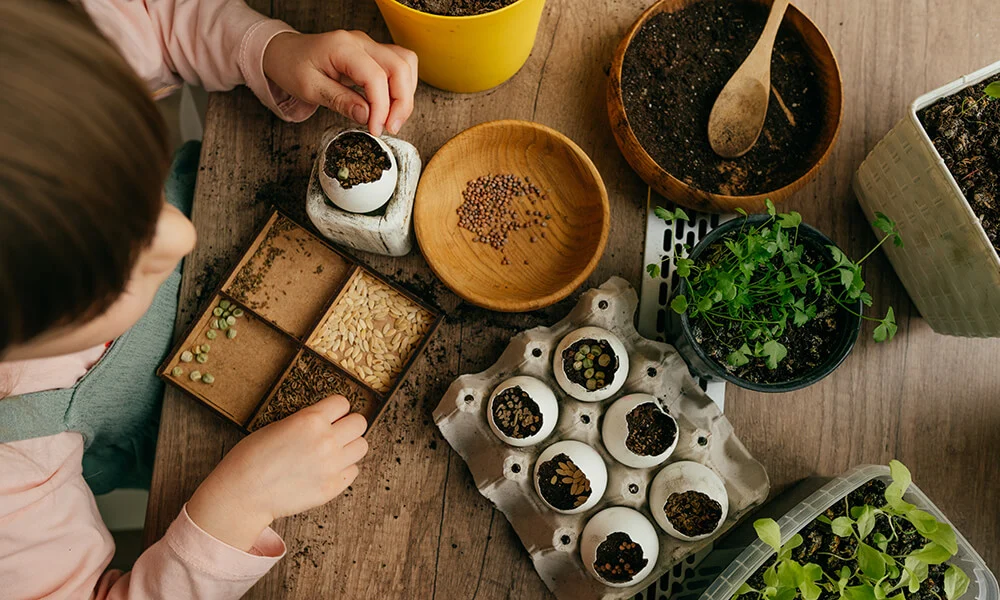
Planting seeds inside eggshells, surrounded by different types of seeds and soil. This Montessori-inspired activity is for the home. It encourages children’s nature, understanding how plants grow, and develops patience and responsibility.
Using eggshells as tiny pots teaches resourcefulness and respect for the environment. Kids get to touch, smell, and observe as their seeds sprout day by day. It’s calming, exciting, and educational all at once.
20. Backyard Nature Exploration

Montessori activity, hands-on, child-led, and connected to the real world. You don’t need expensive supplies or complicated plans. Just outside with your child, let them lead the way, and follow their curiosity.
Encourage them to ask questions and make discoveries independently. Nature walks, bug hunts, and leaf collecting are simple yet powerful ways to build focus, independence, and a love for learning.
21. Hands-On Pulley Experiment at Home
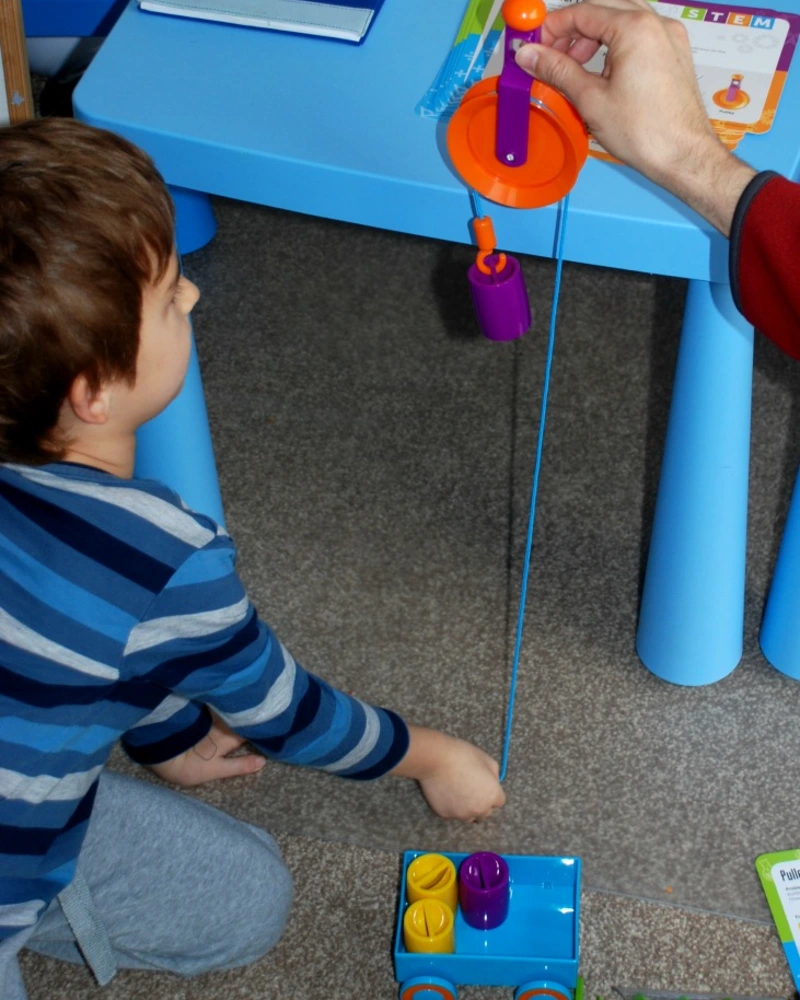
With just a few simple tools, he’s learning about physics in a fun and meaningful way. The pulley setup encourages problem-solving, fine motor skills, and curiosity about how things move. Montessori activities like this don’t need to be fancy.
Using real-life tools and letting your child freely build confidence and independence. You can create your own version with string, spools, and small weights. Learning becomes exciting when kids are actively involved in the process themselves.
22. Magnetic Stick Building for Creative Play

Fun, open-ended activity that fits beautifully with Montessori principles. Kids get to balance, geometry, and creativity all at once without even realizing they’re learning. No screens, no strict instructions, just hands-on building that strengthens concentration and fine motor skills.
This kind of quiet play also helps with problem-solving and patience. You don’t need anything fancy, just magnetic building toys and a flat surface.
23. Bug Rescue Fine Motor Sensory Tray Activity
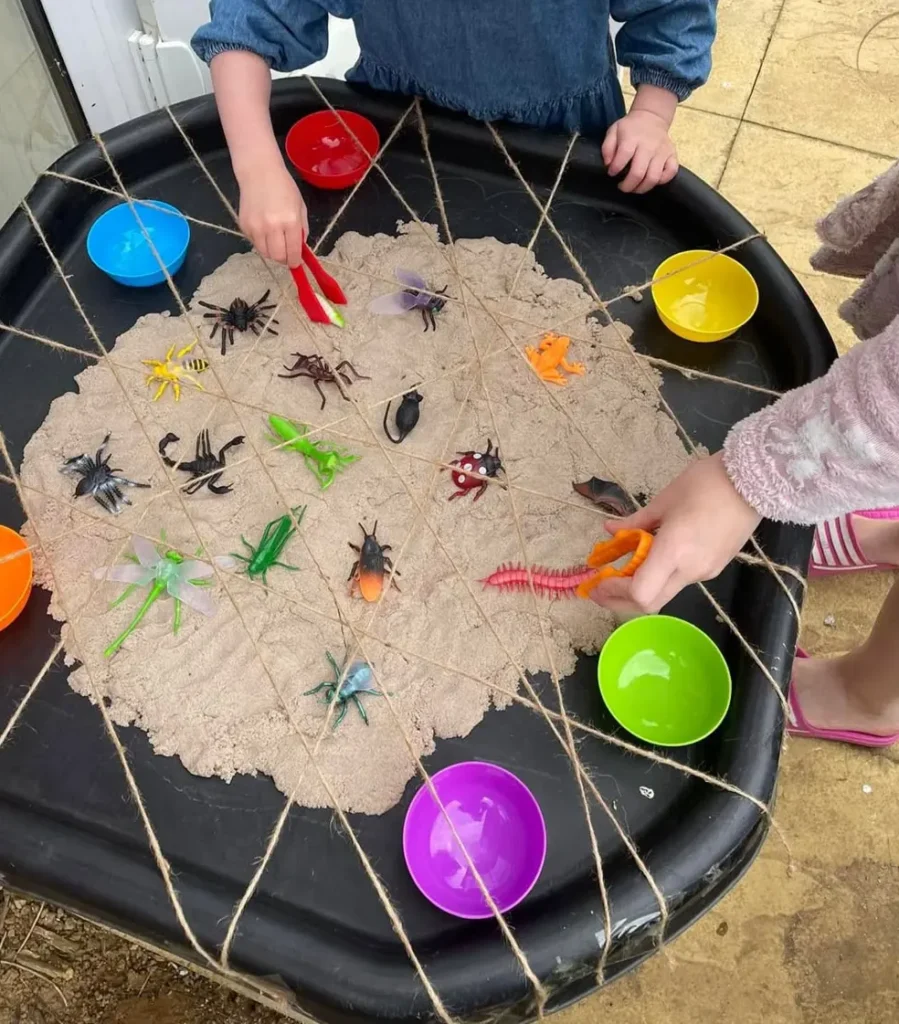
Hands-on discovery and fine motor practice. Two kids are using tongs to rescue plastic bugs from a tray filled with sand and string. It’s playful, but also packed with learning.
They’re strengthening their finger muscles, practicing focus, and sorting bugs by color or type into different bowls. A sensory-rich way to build patience, coordination, and independence, just the way Montessori learning is meant to be.
24. DIY Indoor Fishing Pond
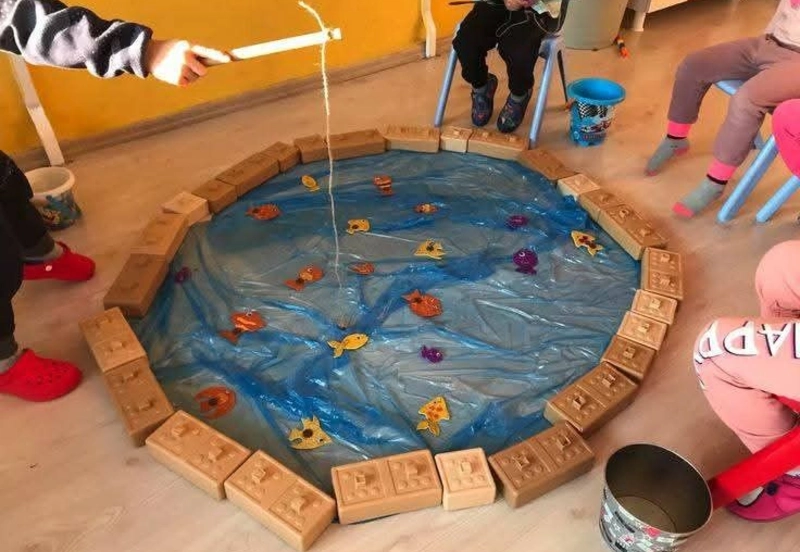
Around a homemade fishing pond, built with toy blocks, blue plastic, and paper fish. Each child takes turns using a simple fishing rod to catch a fish.
Beyond the fun, this game builds hand-eye coordination, patience, and social skills like turn-taking. Write numbers or letters on the fish for some sneaky learning.
25. Recycled Art Wall
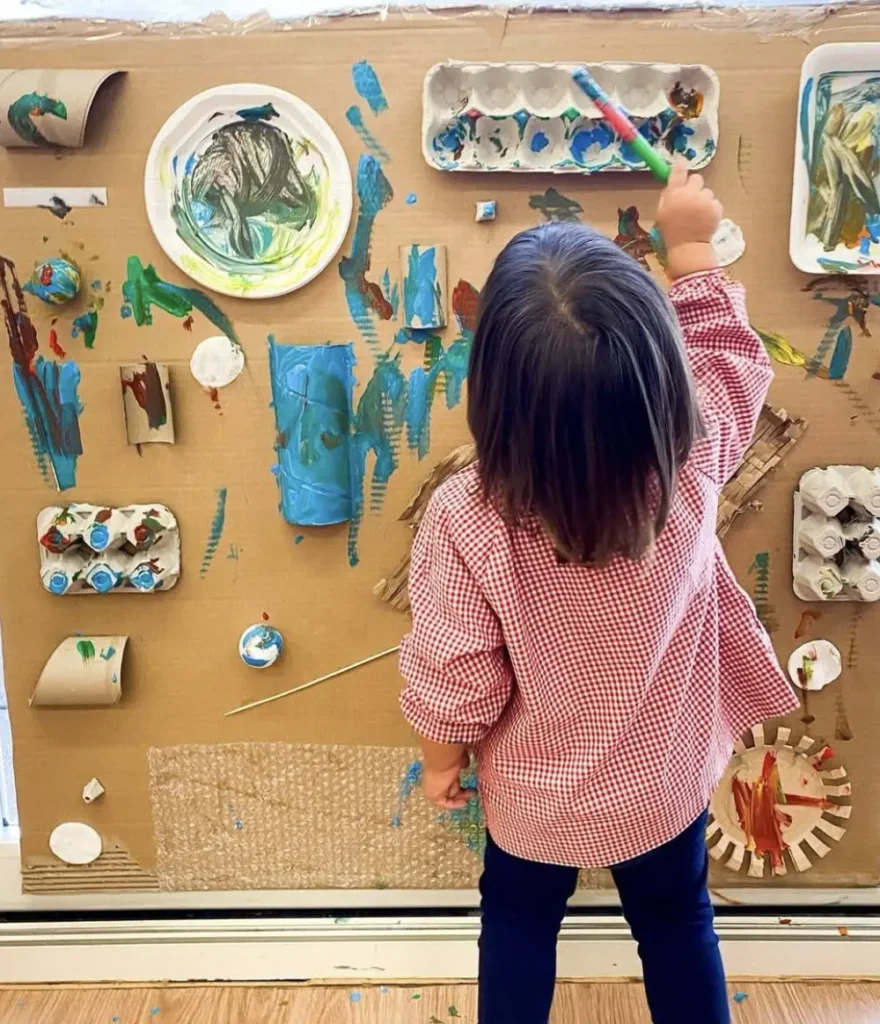
Painting freely on a cardboard wall covered with recycled materials egg cartons, paper plates, and cardboard tubes. This is such a Montessori-inspired activity you can easily do at home. It encourages, sensory and fine motor development, all through hands-on play.
Kids get to experiment with textures, colors, and shapes, expressing themselves freely. Montessori at home doesn’t need to be complicated, just thoughtful, open-ended, and child-led like this.
26. Volcano Science Project

Volcano model that’s just waiting to erupt! It’s the, of how you can turn science into an exciting, hands-on Montessori activity right at your kitchen table. Using simple materials, cardboard, paint, and a bit of creativity, kids can build their own volcano.
Later, with baking soda, vinegar, and food coloring, they’ll watch it erupt. This project combines art, science, and a bit of drama, ideal for curious young minds. Montessori at home is all about letting children, through touch, experimentation, and wonder.
27. DIY Montessori Geography Globe

A 3D model of Earth is a fantastic Montessori-inspired activity you can do right at home. Kids can, continents, oceans, and even pinpoint different countries using mini flags. Hands-on learning that encourages children to ask questions, make connections, and understand the world around them, literally.
Clay, papier-mâché, or even cake, this globe helps bring abstract concepts to life. Montessori learning at home doesn’t need to be complicated.
28. Color Tablet Activity at Home
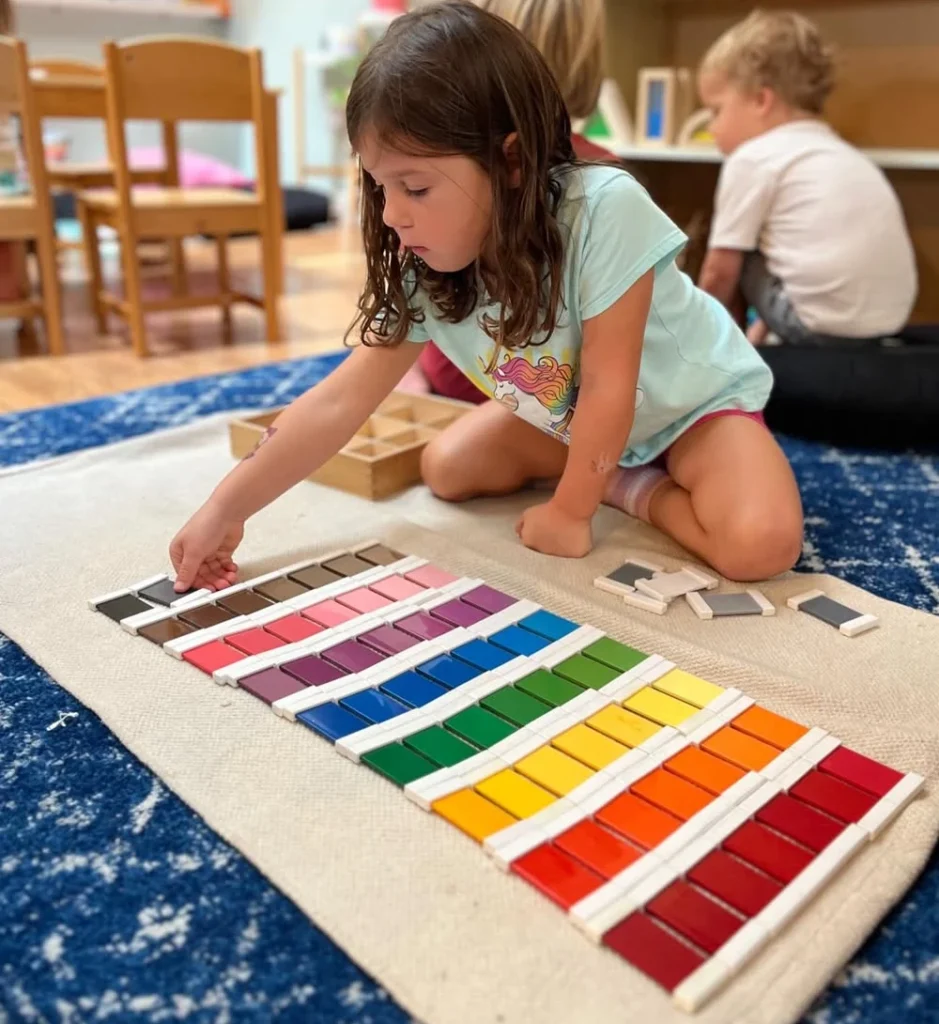
Deeply focused on sorting and arranging colorful tablets by shade. This classic Montessori color tablet activity helps kids learn about color gradients, fine motor skills, and visual discrimination, all through hands-on play.
All you need are some color tablets and a soft mat. Lay them out, mix them up, and let your child organize them from lightest to darkest.
29. DIY Alphabet Sorting with Egg Carton
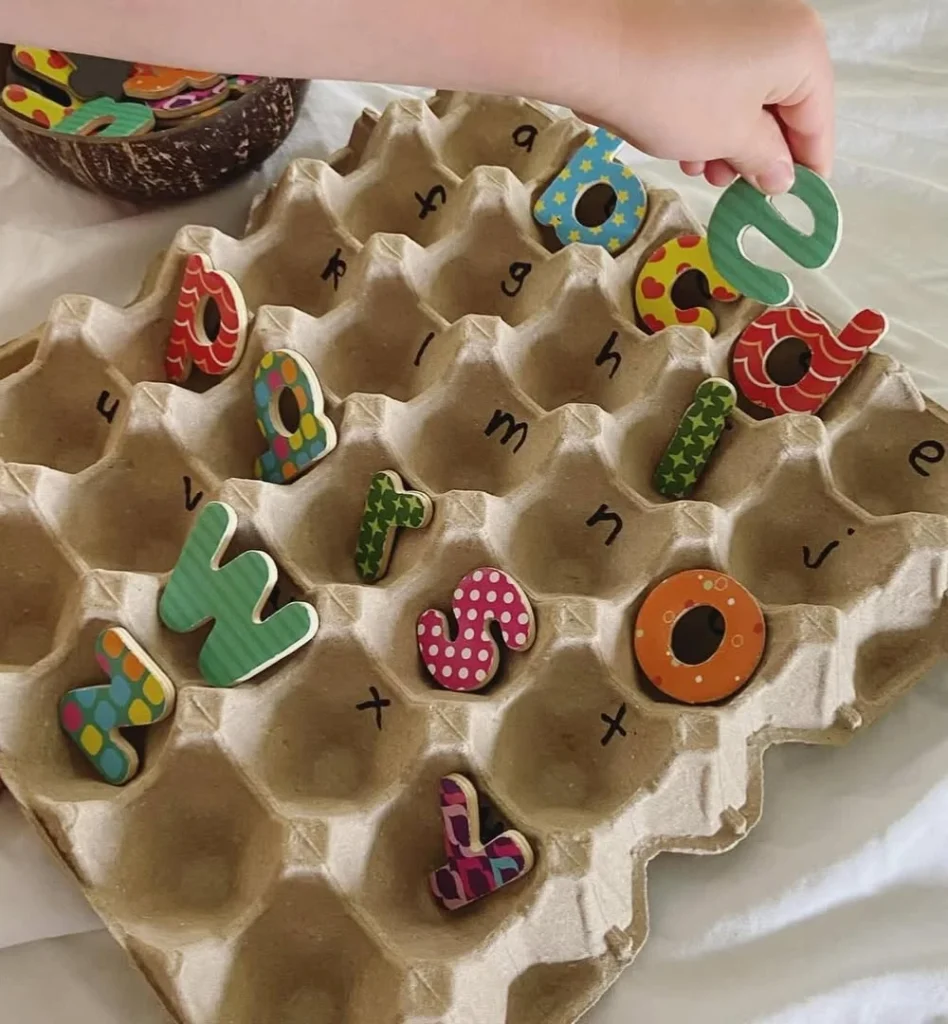
Matching colorful wooden letters to their corresponding spots on a recycled egg carton. Each compartment is labeled with a letter of the alphabet in lowercase, creating a fun and tactile way for kids to practice letter recognition and matching. It’s budget-friendly, hands-on, and super easy to set up.
All you need is an egg carton, a marker, and some letter pieces. This kind of playful learning sparks curiosity and builds literacy skills without needing screens or worksheets.
30. Recycled Flower Craft with Color Sorting

The flower is made using recycled cardboard rolls for petals, filled with vibrant colored paper. The stem is wrapped in green, and fabric leaves complete the look.
This activity is more than just art; it helps children develop fine motor skills, color recognition, and spatial awareness. Encourages creativity and sustainability by using materials you already have.
31. Pom-Pom Butterfly Color Matching Craft

Butterfly craft is a fun and colorful Montessori-inspired activity you can easily do at home. Made with toilet paper rolls, cardboard pieces shaped into wings, and fuzzy pom-poms, it’s for little hands.
Match the colorful pom-poms into the wing sections, encouraging your child to, color recognition, fine motor skills, and hand-eye coordination. Add a cute face and pipe cleaner antennae for some extra charm.
32. Tissue Paper Blossom Tree Craft
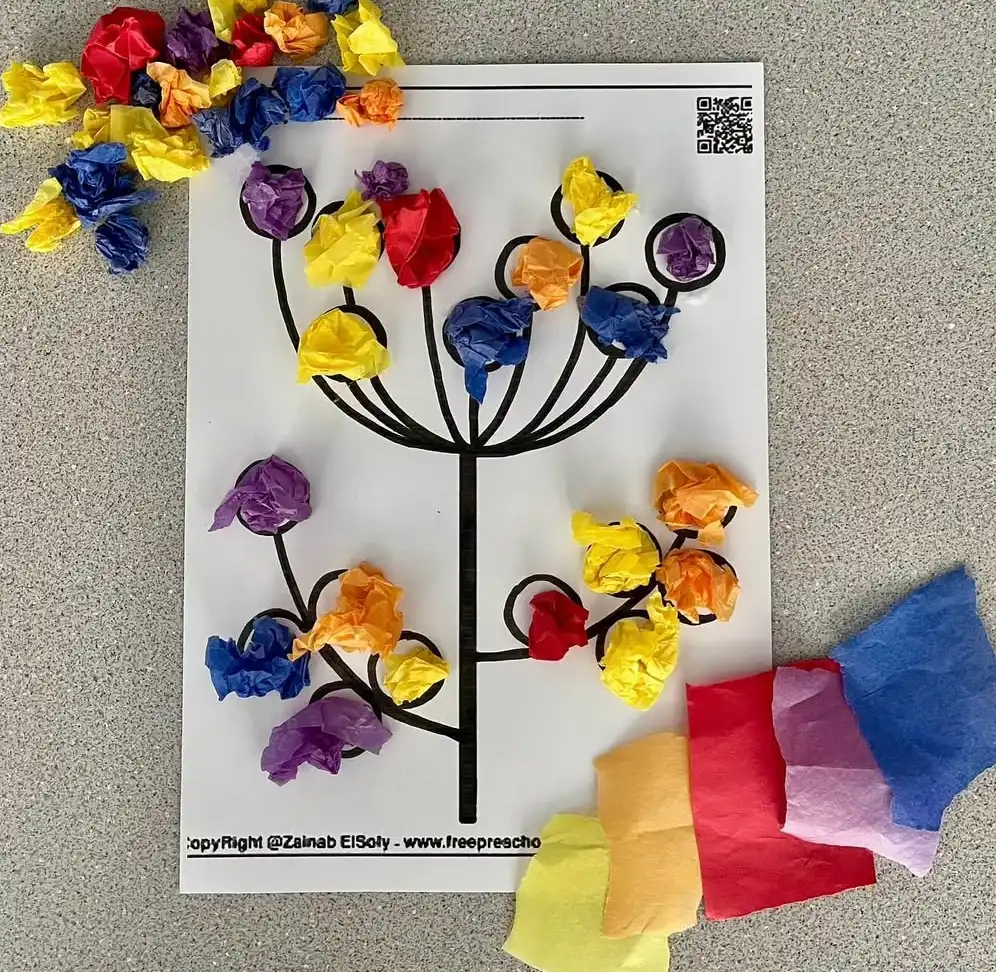
Fills in a tree outline by crumpling small pieces of colorful tissue paper and gluing them into the circles like blossoms. It’s a fantastic way to boost fine motor skills, encourage creativity, and practice color recognition.
Kids love the texture and bright colors, and it’s mess-free compared to paint. Turns into a lovely piece of artwork you can proudly hang up.
33. Cylinder Tower Radiant Activity
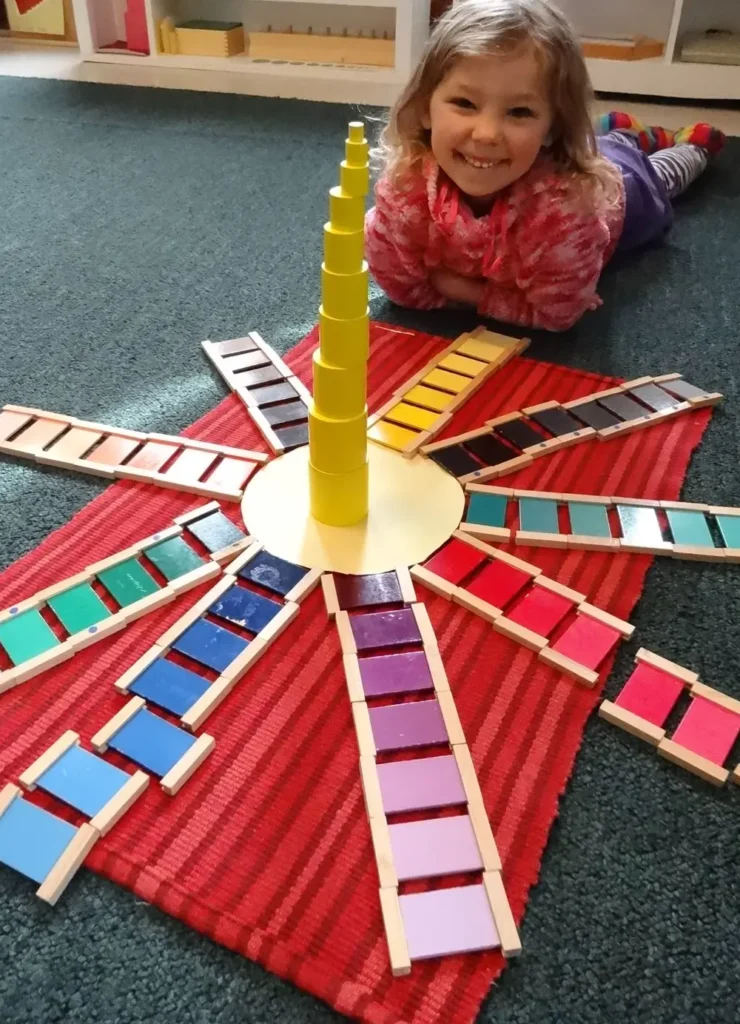
Color tablets and the yellow knobless cylinders. Laid out like sunrays around the tower, the color tablets are arranged beautifully by gradient. Work on color sorting, visual discrimination, and spatial arrangement.
Stacking the cylinders in the center adds an extra challenge in coordination and sequencing. You can recreate a similar experience at home using colored cards and stackable cups. It’s a great way to make learning joyful and artistic.
34. Pipe Cleaner Stick Figure Matching
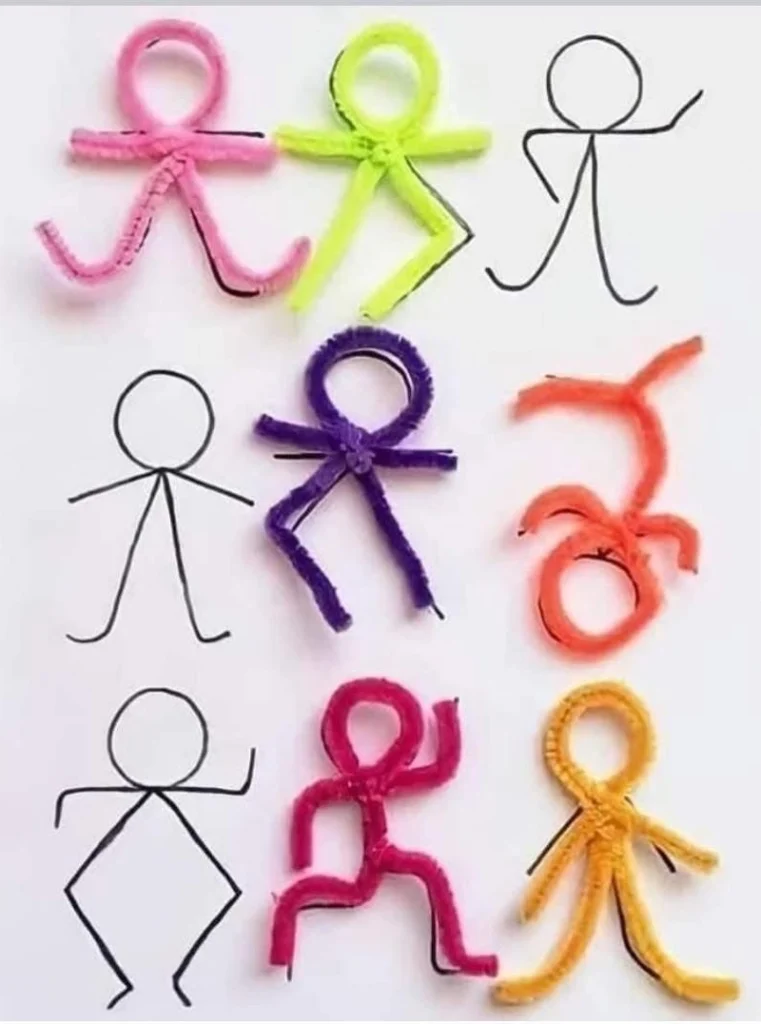
Kids use colorful pipe cleaners to recreate stick figure poses drawn on paper. It’s a brilliant way to support fine motor development, hand-eye coordination, and shape recognition.
The challenge is to bend and twist the pipe cleaners to match each pose exactly, which also helps with concentration and spatial awareness. This creative activity turns something as basic as pipe cleaners into a hands-on learning experience.
35. Fine Motor Rubber Band Board
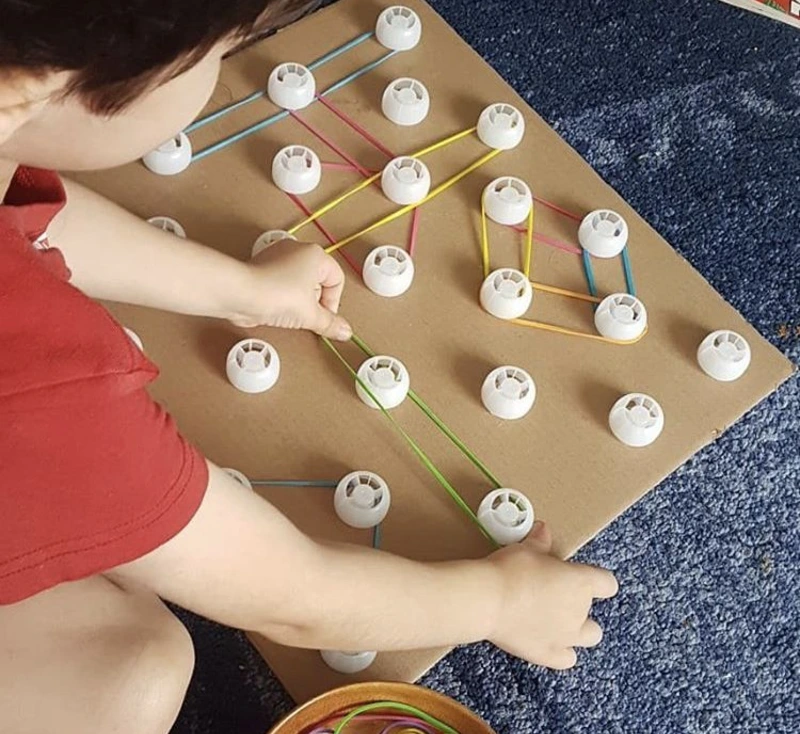
Piece of cardboard, some upcycled plastic bottle caps, and rubber bands, this homemade geoboard invites kids to stretch, twist, and create shapes. It strengthens fine motor skills.
Builds hand strength and introduces early geometry, feeling like play. Children love experimenting with different color combinations, and for independent or quiet-time play.
36. Spooky Halloween Sensory Bin

A Halloween-themed sensory bin is a thrilling way to keep little hands busy, play, and improve fine motor skills.
The base is made of purple-dyed rice, and it’s filled with creepy-cute items like plastic skeletons, fake spiders, bouncy eyeballs, bones, and bugs.Kids can scoop, pour, sort, and create stories, their senses, and build hand strength.
37. Finger Painting Nature Art
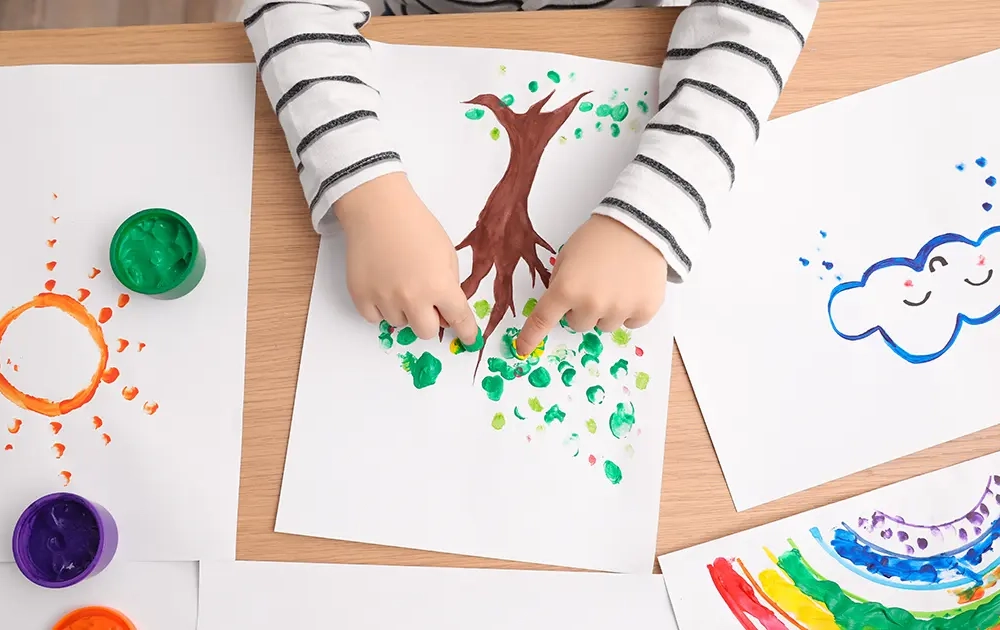
The child is using their fingers to add green leaves to a hand-drawn tree, bringing nature to life on paper. No brushes needed, just tiny fingers, some colorful paints, and a big.
Activities like this help children express emotions, recognize colors, and strengthen hand muscles, all, having a blast. This is simple for a relaxing afternoon at home.
38. Building Block Tower Play
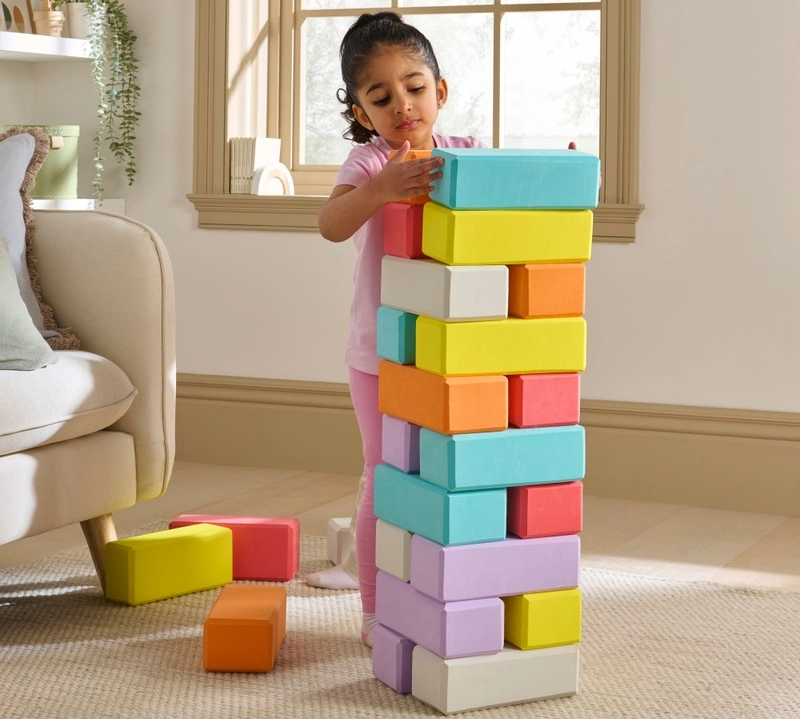
Focus and problem-solving, all through play. In this image, a child is fully engaged in building a tall, colorful tower with soft foam blocks. It may look simple, but it’s a hands-on way to learn about gravity, coordination, and spatial awareness.
Bright colors stimulate visual development. Activities like this encourage independence and concentration, two core values in Montessori education.
39. Colorful Cup Stacking with Family
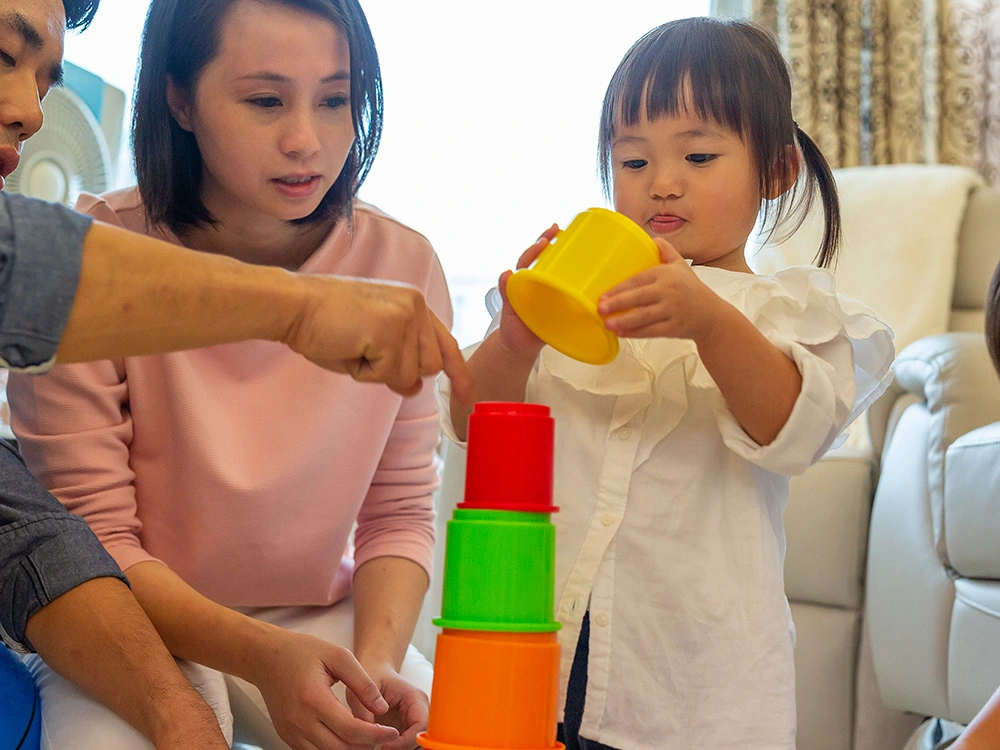
The girl is carefully placing a yellow cup on top of a tower, with the guidance of her parents. Activity helps children develop hand-eye coordination, fine motor skills, and spatial awareness. It also introduces early math concepts like size, order, and balance.
Montessori activities don’t need fancy materials; matter is allowing your child to repeat and master through hands-on play. Even better when it turns into a bonding experience like this one.
40. Bottle Cap Turtles Craft

Using just colored paper, the bottoms of plastic bottles, and a little creativity, kids can color, shape, and texture, making their very own turtle friends. Each turtle has a unique color and face, helping children with color recognition and emotional expression.
It’s also a great way to talk about animals, recycling, and art, all in one fun project. This kind of activity nurtures independence and creativity, all using items you already have at home.
41. Scissor Skills and Paper Art Fun

Cutting and gluing paper shapes, creating a masterpiece together. Build fine motor skills, hand-eye coordination, and patience, all core Montessori values. It also teaches collaboration, as they share tools and ideas.
All you need is some paper, child-safe scissors, glue, and. Activities like these don’t just keep kids busy; they help them grow independent and creative. There’s nothing like the joy of making something all by yourself.

